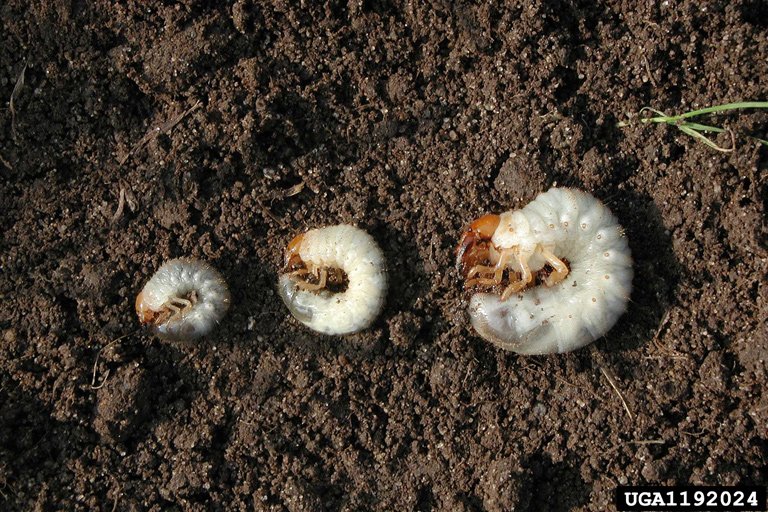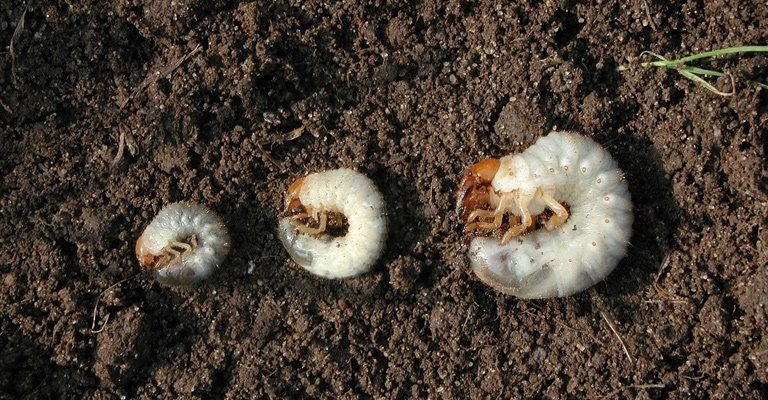
White grubs, while often perceived as pests, can actually vary quite a bit. Just like how a remote control has different buttons for different functions, these grubs have unique traits and behaviors depending on their species. In this article, let’s dig deeper into the world of white grubs, exploring their types, life cycles, and how to tell them apart. Trust me, this info could help you make informed decisions about your garden or yard.
What Exactly Are White Grubs?
White grubs are the larval stage of various beetle species, primarily belonging to the Scarabaeidae family. They’re most commonly recognized by their distinctive C-shape and light-colored bodies, often resembling small maggots. You might find them lurking in damp soil, devouring roots and organic matter, especially in the summer months when they’re most active.
But why do they matter? Well, while some grubs can be harmful to your garden, others play an essential role in the ecosystem, breaking down organic material and contributing to soil health. It’s like having a multi-talented friend who can be both a party crasher and the life of the party, depending on the situation.
Types of White Grubs
So, are all white grubs the same species? The short answer is no! There are several different types of white grubs, and each belongs to unique beetle families. Some of the most common types include:
- Japanese Beetle Grubs: These are known for their destructive rooting tendencies, often feasting on grass and ornamental plants.
- June Beetle Grubs: Generally found in larger numbers, they are usually less harmful but can still cause some damage.
- European Chafer Grubs: These can be particularly troublesome in lawns, as they too enjoy eating grass roots.
Each type has its own life cycle and feeding habits, so knowing which grubs you’re dealing with can help you take the right steps to manage them effectively.
Life Cycle of White Grubs
Understanding the life cycle of white grubs is essential to grasp why they show up in your garden and how to deal with them. Most white grubs undergo a four-stage life cycle:
1. **Egg:** Adult beetles lay their eggs underground, typically in late spring or early summer.
2. **Larva (Grub):** After a week or two, the eggs hatch into grubs. This is the stage when they do most of their feeding, munching on roots and organic matter.
3. **Pupa:** As they grow larger, they transition into the pupal stage, where they prepare to become adults.
4. **Adult Beetle:** Finally, after several weeks to months in the ground, they emerge as adult beetles and the cycle begins anew.
You might be wondering why this matters. Knowing their life cycle can help you anticipate when you’ll see them and when they’re most vulnerable to treatments if you’re facing a grub problem.
How to Identify Different Grub Species
Identifying which type of white grub you’ve got requires a little detective work. Here’s how you can differentiate them:
- Size and Shape: While they all share a C-shape, different species can vary in size. For instance, Japanese beetle grubs are generally larger than June beetle grubs.
- Color: Although they all appear white, some may have a yellowish to brown hue, especially as they mature.
- Behavior: Pay attention to where you’re finding them. Some prefer lawns, while others like compost heaps or vegetable gardens.
You’ll want to keep an eye out and take notes, like a detective unraveling a mystery. The more you observe, the more you’ll understand what to expect.
Are White Grubs Harmful to Your Garden?
This is a big question for many gardeners. The effect of white grubs on your garden really depends on the species. Here’s a breakdown:
- Japanese Beetle Grubs: These can be quite harmful as they feast on plant roots, potentially causing plants to wilt or die.
- June Beetle Grubs: While they can be a nuisance, they generally do less damage than Japanese beetles.
- European Chafer Grubs: Often one of the more destructive species, they can cause significant damage to turf and foliage.
If your garden is under attack, identifying the species quickly can help you decide on the best treatment.
How to Manage White Grubs
If you find white grubs and they’re causing problems, don’t worry—there are plenty of ways to manage them. Here are some strategies:
1. **Natural Predators:** Birds, raccoons, and insects like parasitic wasps can help control grub populations.
2. **Beneficial Nematodes:** These microscopic worms attack grubs and can be introduced to your garden naturally.
3. **Insecticides:** If the infestation is severe, consider using a targeted insecticide. Make sure to follow directions closely to minimize harm to beneficial insects.
Remember, prevention is often the best strategy! Healthy soil and a balanced ecosystem will help keep grub populations in check.
So, are all white grubs the same species? The answer is a resounding no! With various species showing up in gardens and lawns, understanding the differences can help you take better care of your plants. Whether it’s identifying their life cycles or recognizing their potential harm, being informed means you’re better equipped to protect your cherished garden.
Next time you see a white grub, take a moment to observe. Is it a troublemaker or a beneficial friend? Armed with this knowledge, you can approach the white grub mystery with a clearer sense of purpose and confidence. Happy gardening!

